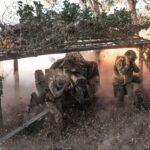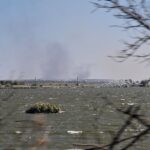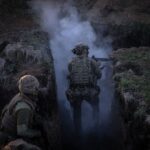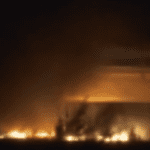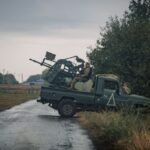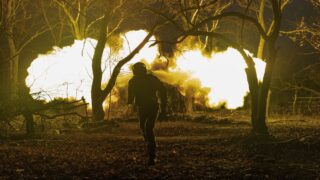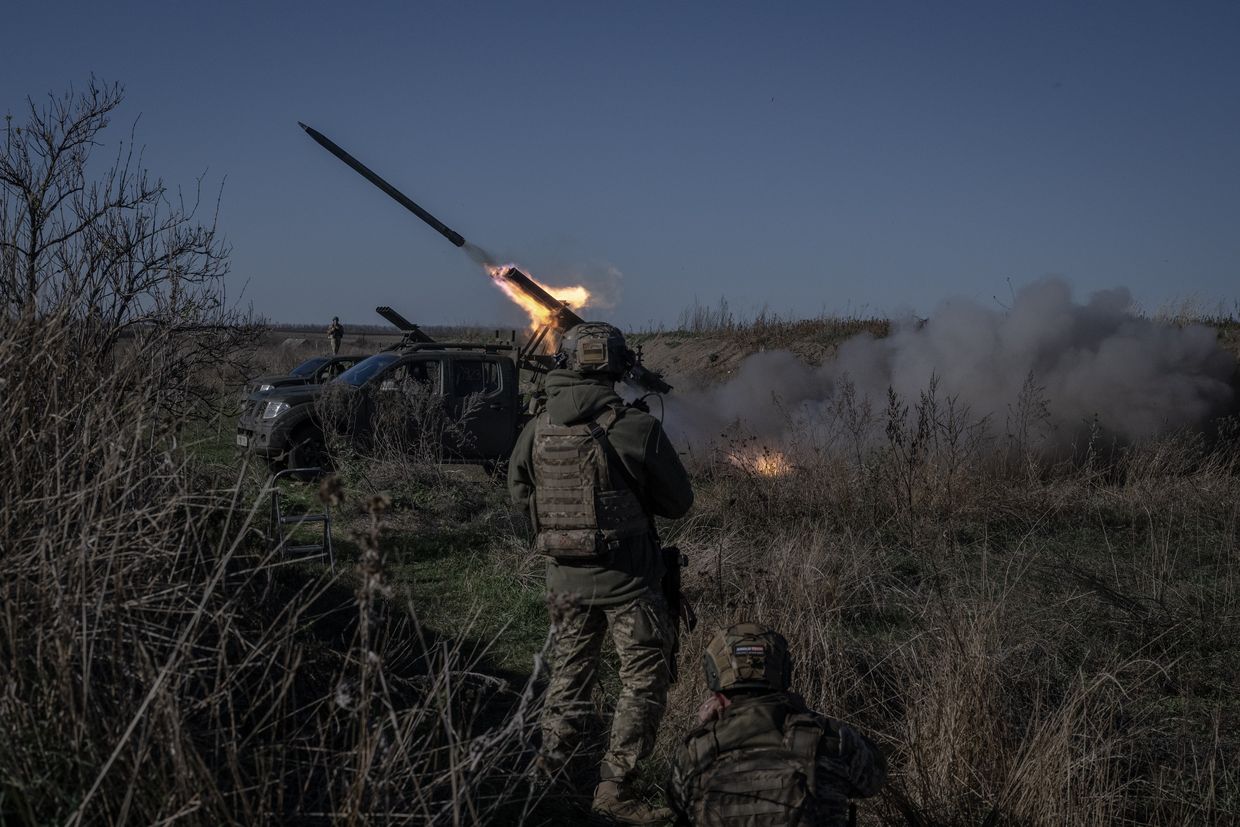
Russia ramps up attacks in Zaporizhzhia Oblast. Will there be a large-scale offensive?
Fears of a larger Russian offensive in Zaporizhzhia Oblast are growing as Russian forces have reportedly made progress along the border between Donetsk and Zaporizhzhia oblasts and intensified air strikes on the regional capital.
"If they achieve a breakthrough, Russia will be able to fire at logistical routes connecting Zaporizhzhia to the east of Ukraine," Southern Defense Forces spokesperson Vladyslav Voloshyn said earlier this month in response to reports of Russian forces amassing for a breakthrough in the direction of Orikhiv and Mala Tokmachka, around 50 kilometers southeast of Zaporizhzhia.
"Russia will try to succeed at any cost to cut off our logistics," he said.
The developments come at a crucial time in the war, with both Russia and Ukraine aiming to strengthen their positions ahead of possible peace talks. In recent months, Russian forces have made advances in Ukraine’s east, including the capture of the key town of Vuhledar in early October.
Having a significant advantage in troops and weapons, Russia is showing no signs of abandoning its goal of seizing more Ukrainian territory. Zaporizhzhia Oblast, in southeastern Ukraine, is one of the four oblasts Russia claims to have annexed in September 2022, although Ukrainian forces still control about a third of the oblast, including the regional capital.

Experts believe that it's too soon to say whether these recent moves signal the start of a major offensive in Zaporizhzhia Oblast, but such an operation seems unlikely in the near future, as Russia remains focused on the eastern front.
“I doubt Russia has the forces available to sustain such an offensive while continuing its offensive operations in Donetsk Oblast, which seems to be the priority,” John Hardie, deputy director of the Russia Program at the Foundation for Defense of Democracies, told the Kyiv Independent.
What has happened in Zaporizhzhia Oblast?
In line with warnings last month from the Ukrainian military, Russia has intensified its assaults along the border between Donetsk and Zaporizhzhia oblasts, reportedly making some limited tactical gains in recent days.
The Russian Defense Ministry claimed on Oct. 14 that its forces had captured the village of Levadne in Zaporizhzhia Oblast, which is located about 170 kilometers (105 miles) from the city of Zaporizhzhia.
When asked about this by the Kyiv Independent, Voloshyn said the situation "is developing quite dynamically," noting that neither side could regain the initiative. The crowd-sourced monitoring group DeepState shows Levadne in the grey zone as of Oct. 16, 2024.
Russian and Ukrainian sources also reported Russian advances toward the nearby village of Novodarivka and in areas southwest of Velyka Novosilka.
In the past two days, Russian forces carried out ground assaults near Robotyne, Mala Tokmachka, and Novodanylivka in the central part of Zaporizhzhia Oblast, but no confirmed gains were made, according to an Oct. 14 report from the Institute for the Study of War (ISW).
The area was the focus of Ukraine’s 2023 southern counteroffensive, which saw the liberation of Robotyne and several other small settlements but didn’t result in a major breakthrough.
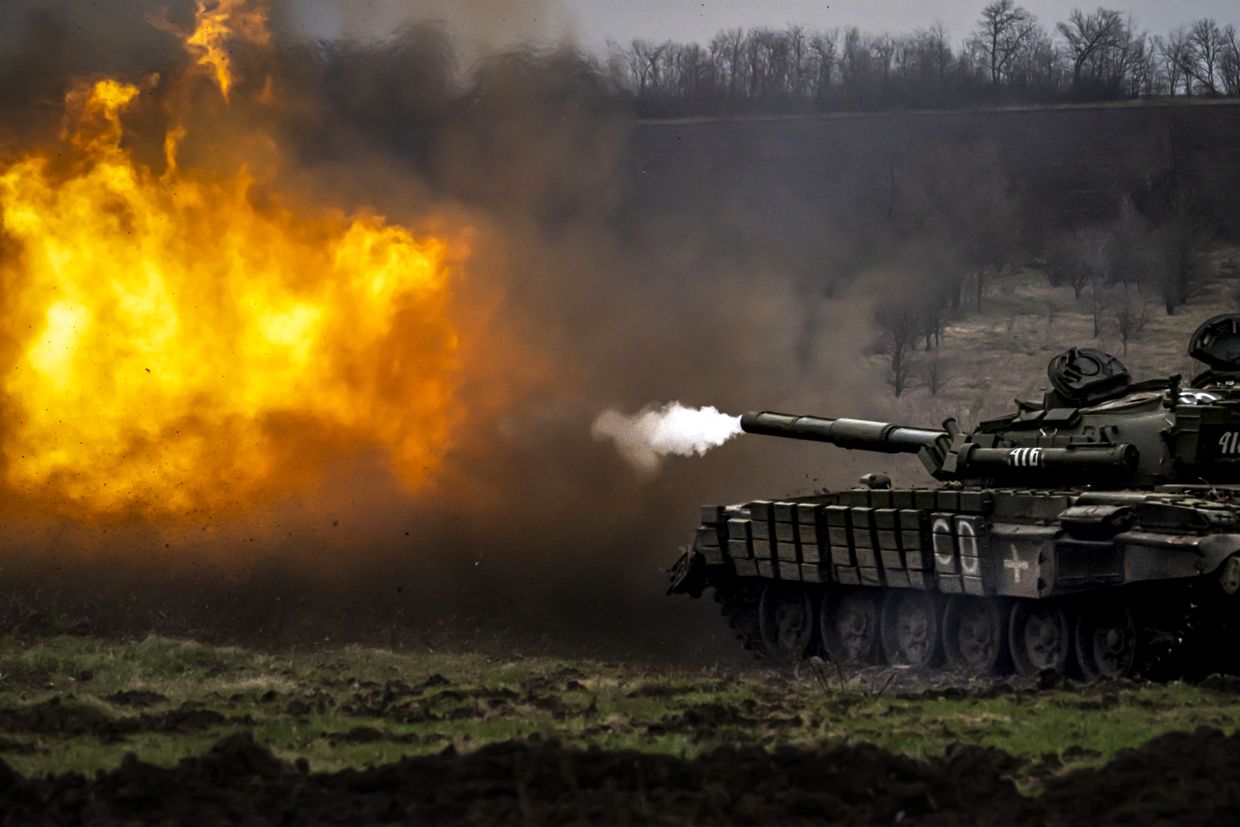

The renewed Russian push in Zaporizhzhia Oblast wasn’t unexpected. Ukraine’s military had been reporting since late September that Russian troops and equipment were being amassed for assault operations in the region. However, Voloshyn said that Russia was only carrying out local ground assaults and would require larger forces for a full-blown offensive in the region.
Petro Andryushchenko, an advisor to the mayor of the Russian-occupied Mariupol, shared a video on Oct. 14 allegedly showing Russian forces transferring large numbers of troops from Russian-occupied Novoazovsk through Mariupol in Donetsk Oblast toward the occupied Polohy district, which is located closer to the front line in eastern Zaporizhzhia Oblast.
At the same time, Russia has increased air strikes on Zaporizhzhia, causing numerous civilian casualties and damaging infrastructure. Russian troops began using highly destructive guided aerial bombs against Zaporizhzhia for the first time on Sept. 23. Before that, the city was targeted only with missiles and drones.
According to Zaporizhzhia Oblast Governor Ivan Fedorov, Russia-launched guided aerial bombs reach the city within minutes. These bombs are almost impossible to shoot down, and Russia is producing them in large quantities.
What’s next?
Despite the constant risk of a broader Russian offensive on all sectors of the front line, current Russian actions in Zaporizhzhia Oblast remain relatively limited, with the primary focus still on Ukrainian-held areas of Donetsk Oblast, according to experts interviewed by the Kyiv Independent.
“In Zaporizhzhia, the Russians have likely made some local gains, but nothing that would alter the general situation significantly in the area,” said Emil Kastehelmi, an analyst at the Finland-based Black Bird Group.
“Levadne is barely a village — there are only a few buildings, and the biggest of them, which could act as a shelter for vehicles, has been blown to pieces. Capturing Levadne would mean an advance of around three kilometers over a couple of fields.”
Hardie said it’s unclear yet whether the recent Russian advances near Levadne and Novodarivka signal a sustained axis of attack in that area.
“Russia previously conducted some attacks in the Velyka Novosilka direction, capturing Urozhaine and Staromaiorske over the summer, though nothing more came of it,” he said.
According to Hardie, Russia is also currently attacking toward Velyka Novosilka from the Zolota Nyva area near Vuhledar, which is “consistent with Russia's broader effort to push Ukrainian forces out of southern Donetsk Oblast.”

Kastehelmi highlighted that these recent Russian ground attacks in Zaporizhzhia Oblast were carried out with "relatively limited forces," suggesting Russian forces have not switched the main areas of their focus.
“It's possible they're just the decisions of local commanders,” he added.
Given the amount of resources Moscow has deployed to counter Ukraine’s ongoing incursion into Kursk Oblast, which began on Aug. 6, Konrad Muzyka, a defense analyst focusing on Russia and Belarus and the head of Rochan Consulting, suggests it is unlikely the Russian military has the capacity for large-scale offensive operations in Zaporizhzhia Oblast.
He added that Russia may be trying to give the impression of preparing for something larger to force Ukraine to spread its forces and commit reserves.
The ISW echoed this sentiment in its Oct. 13 report, saying that it has not observed Russia amassing the manpower and resources needed for a major offensive like those seen in eastern Ukraine.
“Russian forces, on the contrary, have redeployed forces that were previously in the Donetsk-Zaporizhia Oblast border area, and elsewhere in southern Ukraine to respond to Ukraine’s incursion in Kursk,” it said.
According to the ISW, this reactivation in less active areas of the front in southern Ukraine might be an attempt “to divert Ukrainian attention away from Russia’s priority offensive operations in Donetsk Oblast, and to fix Ukrainian forces along the front in southern Ukraine,”
The situation could change if Ukraine were to unexpectedly withdraw from Kursk Oblast, freeing up Russian forces, suggested Hardie. “But that's obviously quite unlikely,” he added.
“And even if that were to happen, I suspect Russia would choose to reinforce its offensives in Donetsk Oblast or the Kupiansk direction (in Kharkiv Oblast).”
Introducing official
merch from the Kyiv Independent
const eshopBannerv3Btn = document.getElementById(“snippet__officialMerchV1_button”);
eshopBannerv3Btn.addEventListener(“click”, () => {
window.dataLayer?.push({
event: `InternalLinkClick`,
element_category: “Banner e-shop”,
element_name: “Special article snippet”,
target_url: “https://store.kyivindependent.com/”,
target_text: “Shop now”,
});
window.open(“https://store.kyivindependent.com/”, “_blank”);
});
Source link


